Guitar Amplifier Electronics: Circuit Simulation is a step-by-step tutorial for simulating vacuum tube guitar amplifiers using LTspice, a free SPICE-based electronic circuit simulator for Windows and macOS. The book walks you through the basics of developing a schematic, setting up a simulation, integrating vacuum tube models, and interpreting the results. From there it gradually ramps up to advanced topics, like analyzing the dynamics of overdrive and writing new SPICE models for triodes and power tubes. With this book, you will learn how to
- simulate the amp as a complete system, from guitar-in to speaker-out,
- measure signal level and frequency response at any point in the amplifier,
- determine tone stack frequency response for a range of control positions,
- quantify how much a circuit loads down its driving stage,
- measure true RMS output power for a power amp,
- compute a power supply's DC output voltage under any load condition,
- test negative feedback for single-ended and push-pull power amps,
- determine the feedback resistor value for a desired closed-loop gain,
- simulate real-world components,
- integrate new tube models into LTspice,
- read and write SPICE code to add your own components,
- translate data sheet specifications into a new triode AC model,
- write an improved model for 12AX7 grid current and use it to measure the dynamics of harmonic distortion, and,
- analyze transient behavior when a preamp or power amp is overdriven,
especially changes in the effective grid bias.
Richard Kuehnel
is a member of the Circuits and Systems Society of the Institute of Electrical and Electronic Engineers.
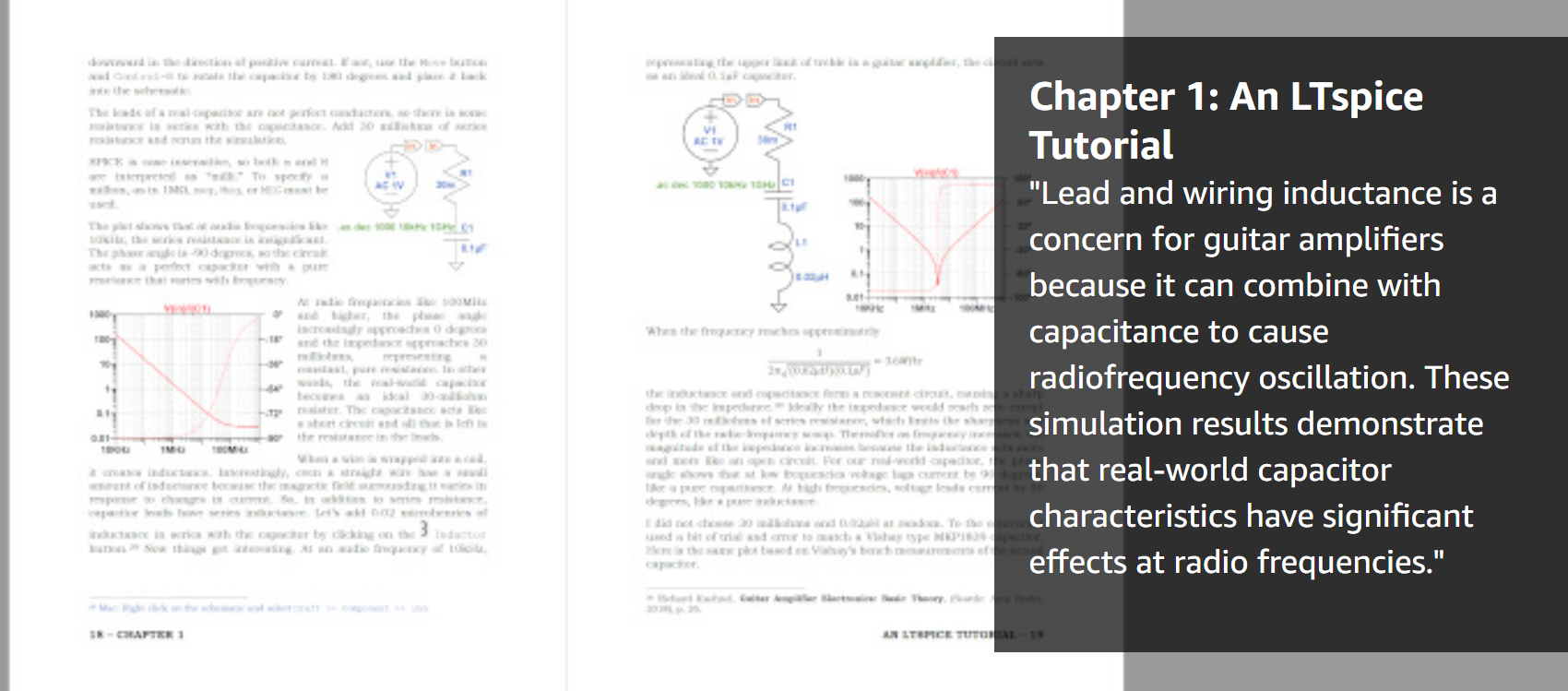
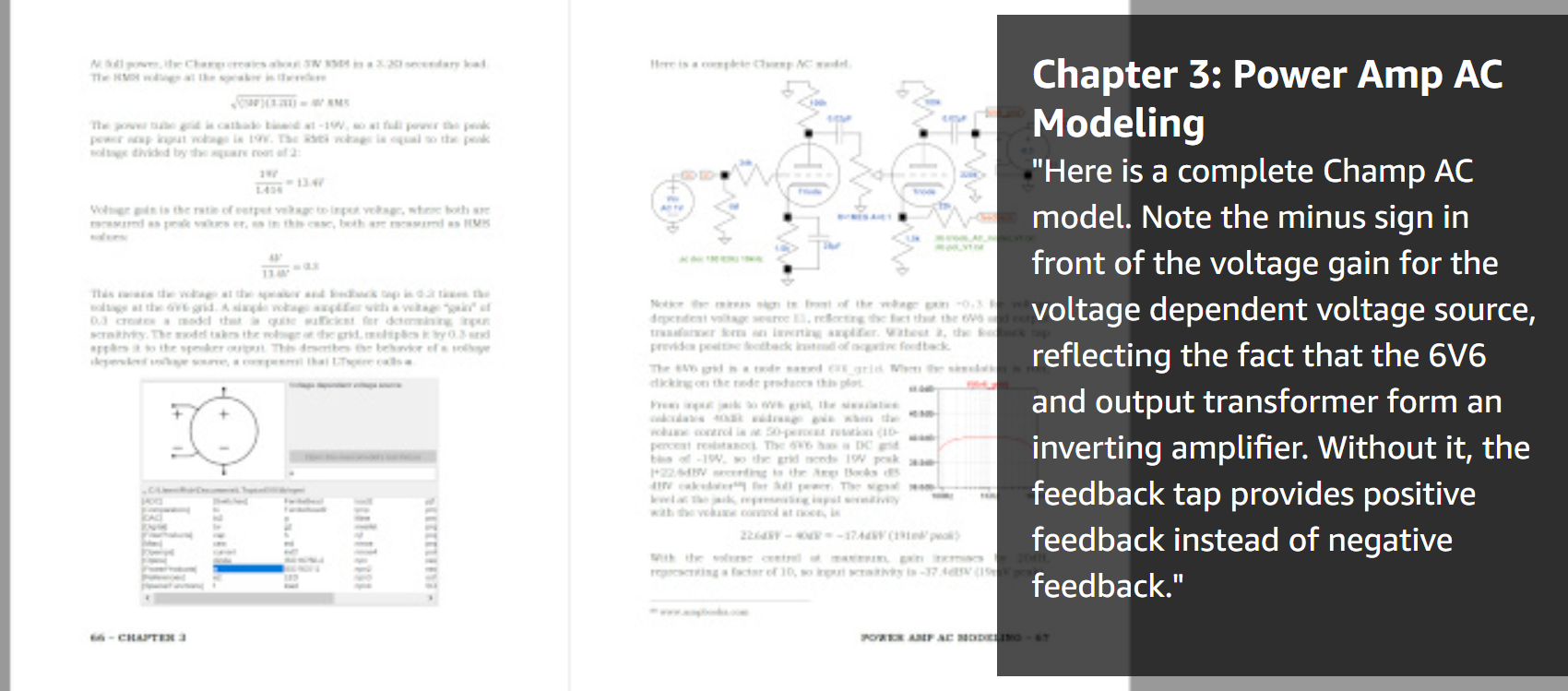
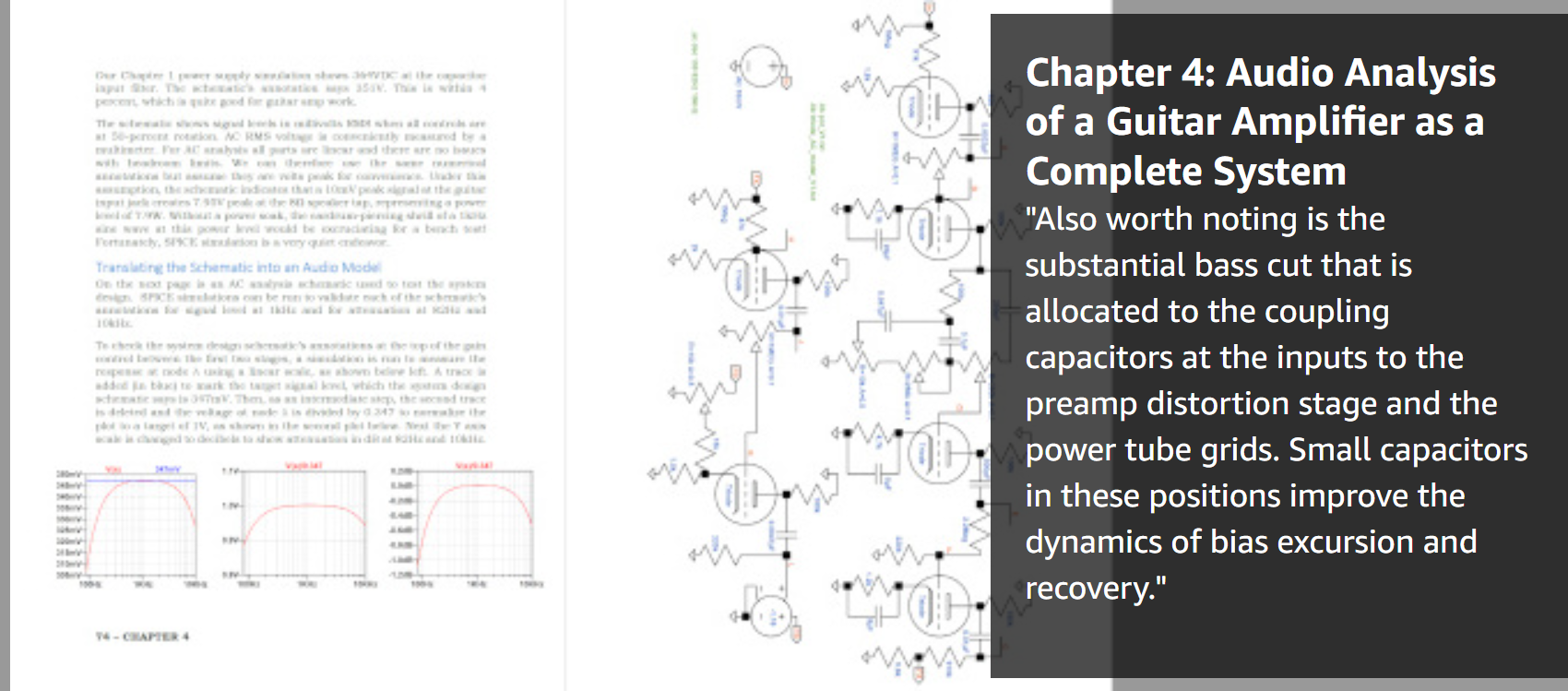
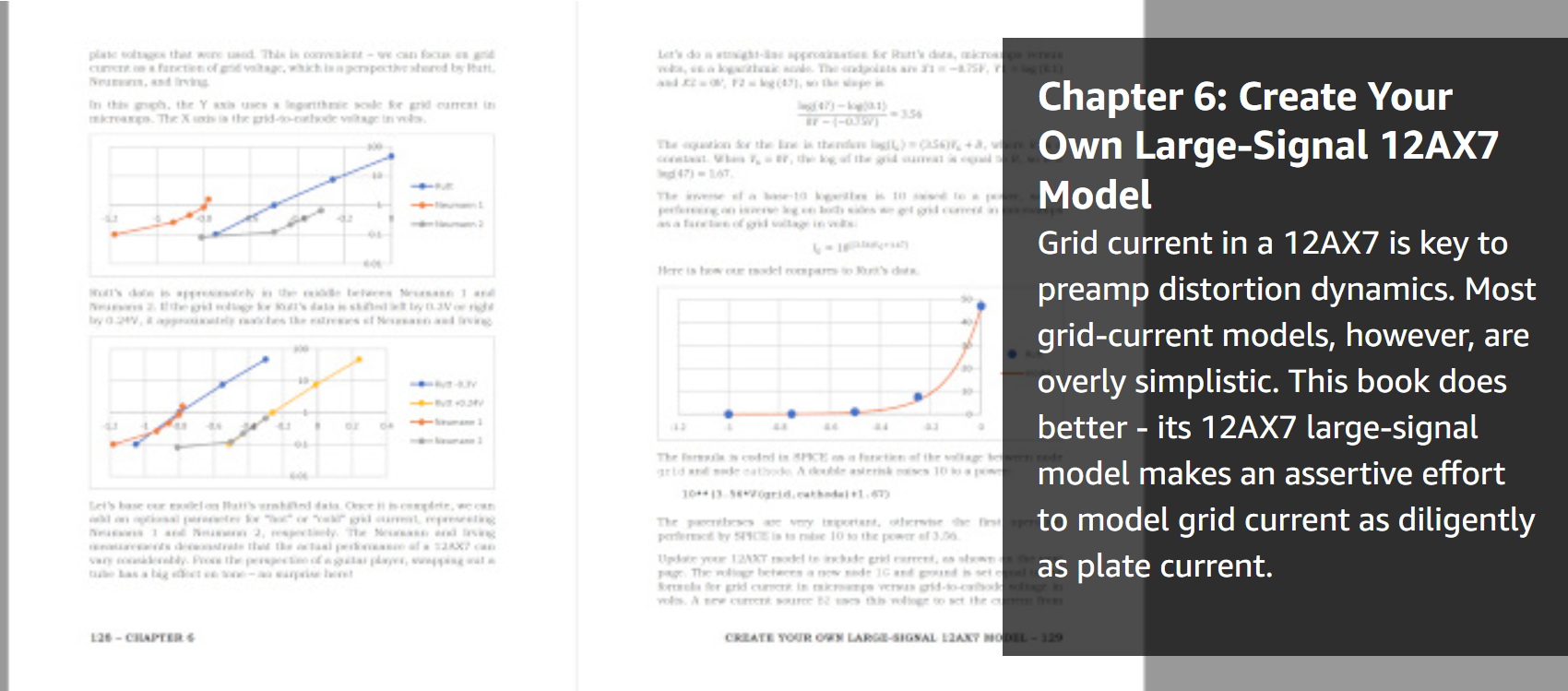
| |
 |
 |
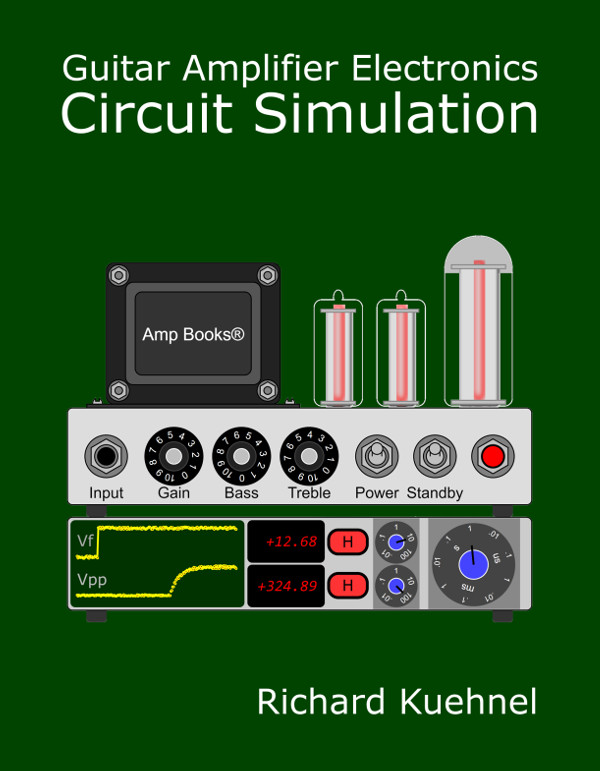 |
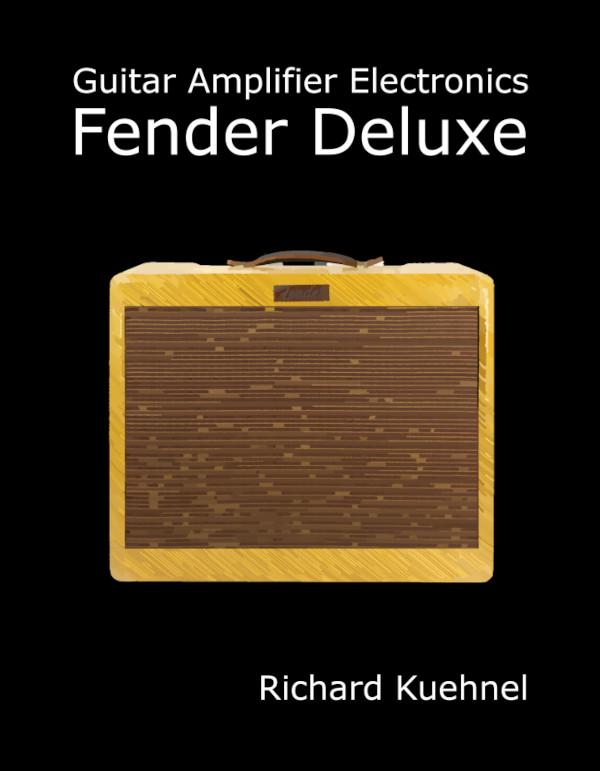 |
 |
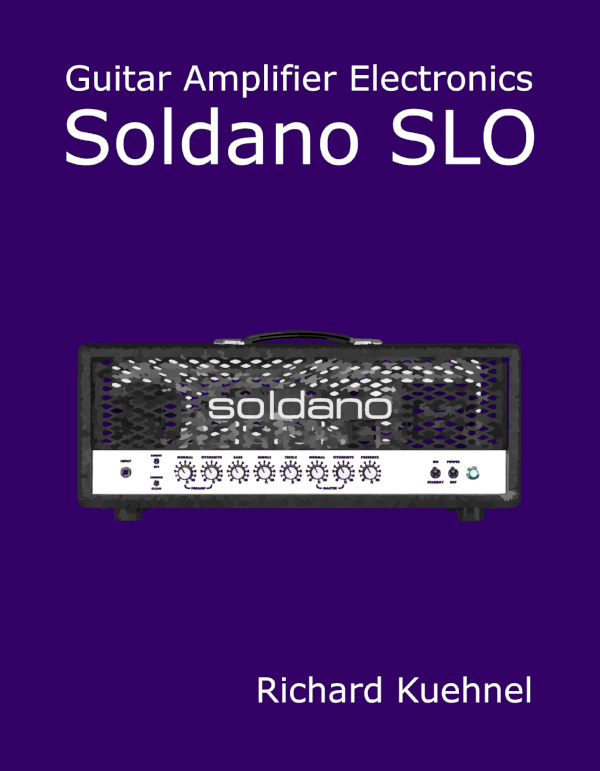 |
| Mastering Basic Electronics |
✓ |
|
|
|
|
|
| Preamps and Tone Stacks |
✓ |
✓ |
✓ |
✓ |
✓ |
✓ |
| Power Amps and Negative Feedback |
✓ |
✓ |
✓ |
✓ |
✓ |
✓ |
| Power Supplies |
✓ |
✓ |
✓ |
✓ |
✓ |
✓ |
| DC-Coupled Cathode Followers |
✓ |
✓ |
|
|
✓ |
✓ |
| Effects Loops |
|
✓ |
|
|
|
✓ |
| Reverb and Tremolo |
|
|
|
✓ |
|
|
| |
 |
 |
 |
 |
 |
 |
| Crafting a Complete Architecture |
|
✓ |
|
|
|
|
| Testing Overdrive Dynamics |
|
|
✓ |
|
|
|
| Measuring Distortion |
|
|
✓ |
✓ |
✓ |
✓ |
Introduction
Warning: High Voltage!...1
Computer Simulation of Guitar Amplifier Circuits...1
SPICE Models for Vacuum Tubes...3
LTspice: Windows versus macOS...6
Acknowledgements...7
Chapter 1: An LTspice Tutorial
Analyzing Tone-Shaping Circuits...8
Simulating a Real-World Capacitor...16
Simulating a Real-World Resistor...20
Creating a SPICE Model for a New Component...24
Analyzing a Tone Stack...33
Determining a Tone Stack's Input Impedance...37
Computing the Effective Grid-Stopper Resistance...39
Computing a Power Supply's DC Voltage Under Load...42
Chapter 2: Creating a Triode Small-Signal AC Model
A Triode Model from Discreet Components...50
Converting a Triode Model into an LTspice Component...54
Measuring Frequency Response for a Preamp Stage...56
Measuring Signal Levels in dBV...61
Chapter 3: Power Amp AC Modeling
Single-Ended with Negative Feedback...65
Push-Pull with Negative Feedback...68
Chapter 4: Audio Analysis of a Guitar Amp as a Complete System
System Design...72
Translating the Schematic into an Audio Model...74
Input Jack to Speaker Jack Response...83
Chapter 5: Using Downloaded Large-Signal Tube Models
Classic Tube Models Based on Space Current...86
Tweaking the Space Current Model...87
Koren Triode Model...87
Koren Tetrode and Pentode Model...92
Automated Parameter Extraction Using ExtractModel...95
Derk and DerkE Pentode and Beam Power Tetrode Models...95
Chapter 6: Create Your Own Large-Signal 12AX7 Model
Modeling a Specific Circuit for Greater Accuracy...100
Using a Behavioral Current Source...102
A Space Current Model with a Variable Exponent...104
Modeling Plate Current Nonlinear Behavior...114
An Improved 12AX7 Grid Current Model...123
Finalizing the Model...133
Simulating the Effects of Grid Current...134
Measuring the Dynamics of Harmonic Distortion...135
Chapter 7: Create Your Own Large-Signal 6L6 Model
Modeling a Specific Circuit for Greater Accuracy...146
The Plate Current Model...147
Step 1: a Fixed Screen and Grid Voltage Model...149
Step 2: a Fixed Screen Voltage Model...153
Step 3: a Generalized Model...161
The Screen Current Model...168
Step 1: a Fixed Screen and Grid Voltage Model...168
Step 2: a Fixed Screen Voltage Model...172
Step 3: a Generalized Model...177
Operating Point Simulation...183
Transient Simulation...186
Measuring the Dynamics of Harmonic Distortion...187
Analyzing Transient Behaviour During Overdrive...191
Some Final Words on Guitar Amplifier Simulation
Index










